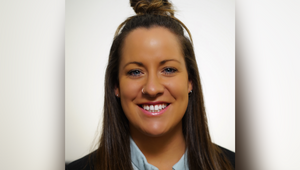
A Bird's Eye Guide to Production In Indonesia

The land of the shadow puppeteer, Indonesia offers up some of the world’s most inviting destinations with nearly 13,500 islands under its jurisdiction. Seven Sunday Films founder Rodney Vincent, post house Katana Group regional development director John Galvin, along with sound house Bumble Bee Studios associate partner Zane Adams, dish out a local’s perspective on production in paradise.
In the South East Asian markets, Indonesia is considered one of the largest producers of TV commercials and due to reasonable budgets and experienced crews, manages to attract top tier directors and production companies from all over the world.
Seven Sunday Films founder Rodney Vincent says the most attractive quality attached to the country’s production crews is their hardworking attitude.
“On average, Jakarta crews work 14 to 16 hour days and this has been the working culture for a very long time,” Vincent says. “Secondly, they have a great approach – wanting to go the distance and ensuring that directors and DOP’s are happy with production results.”
He says there’s a fine balance between local and multinational clients that come to Indonesia to take advantage of the country’s renowned art and wardrobe departments and skilled camera technicians.
“In terms of volume, I would say local and international clients are almost the same, but in terms of production expenditure, it seems the local clients are spending more these days,” he admits.
Whether choosing to shoot in Jakarta or Bali, both location settings offer directors something unique.
“Jakarta is more urban, and Bali offers beaches, landscapes, mountains, temples and a more traditional town-like setting,” offers Vincent. “Many of the crews (and their equipment) are based in Jakarta, so you would normally have to organise travel across to Bali.”
With so many gorgeous locations to choose from, Vincent is hard pressed coming up with a ‘Top 10’ but offers up Bali as a whole, including the Temples in Jogja (especially Borobodur), Mount Bromo, Caves in Surabaya, Waterfalls in Flores and the Komodo Islands.
Due to the culturally liberal nature of Indonesia – the country has five different key religions – and the diversity of ethic groups, he says mutual respect and harmony is very much a foundation of Indonesian society.
And, with so many cultures, the talent pool is also pretty diverse and features people from Asian, Caucasian and Arabic descent.
When filming comes to an end and you need to consider planning for post, Katana Group regional development director John Galvin says budgets are slightly lower when the work is completed locally in Jakarta.
“It's always assumed that when doing post production in SE Asia, where travel is involved, that the budget is larger (let’s say flying to Singapore or Bangkok) and that the budget is expected to be more for the work quoted; perhaps 20 per cent more than local Indonesian costs,” Galvin admits.
He says budgets range from USD $5K up to $30K depending on what work is required – for example, a basic colour and online finish should set you back no more than $10K.
Galvin says the majority of the work he secures in Jakarta is via production companies, however there are times when agencies approach him direct.
Whilst 90 percent of the post work is locally based, he says production shops in Singapore and Vietnam sometimes reach out to Katana Group and although Jakarta hasn’t yet established the same post production reputation as Bangkok, this is slowly starting to change as the skills for post in Indonesia improve each year.
Galvin says competition is still very active in the local market, with over 20 post facilities in Jakarta that range from small one-man band shops to large one stop shops that offer full services including colour correction, online and CG.
“I believe there is a growing benefit to doing post in Jakarta as the industry has matured, meaning there is a good pool of fresh creative talent available on the ground.”
Competition is also on the rise for Indonesian sound shops, and Bumble Bee Studios associate partner Zane Adam says over the past decade, music houses around Jakarta have quadrupled.
He believes clients in Indonesia take huge pride in creating something original for their brand so original composition is hugely popular as opposed to licensing tracks.
“There are so many good composers, musicians and sound designers here in Indonesia,” says Adam. “Walk around the streets and you are bound to bump into a street musician strumming away for a small token. It's amazing to be able to work with these great people.”
He reckons social and economic status along with age plays a significant part in determining which musical style is best suited to consumers in Indonesia.
“Urban groups enjoy electronic, classical, pop, hip hop, indie, EDM or any contemporary music, while groups outside of Jakarta prefer rock, metal, pop and ballads.”
Adam says this is not always a hard and fast rule and in general Indonesians are very open to many different styles.
“You will be surprised to hear a teenage kid singing to The Rolling Stones or Bob Dylan. Having said that, Dangdut music is a very well known music style in Indonesia, however not commonly popular within urban groups.”










